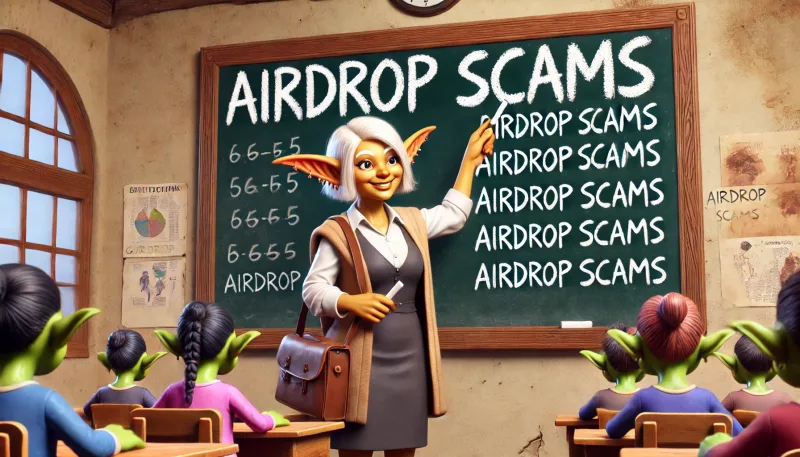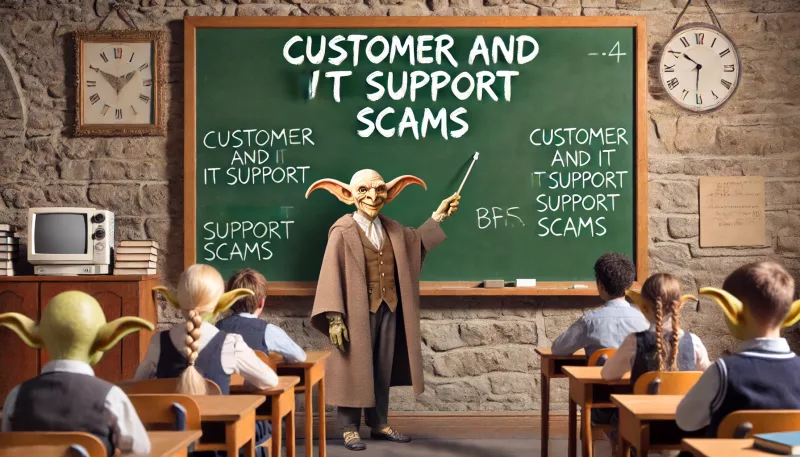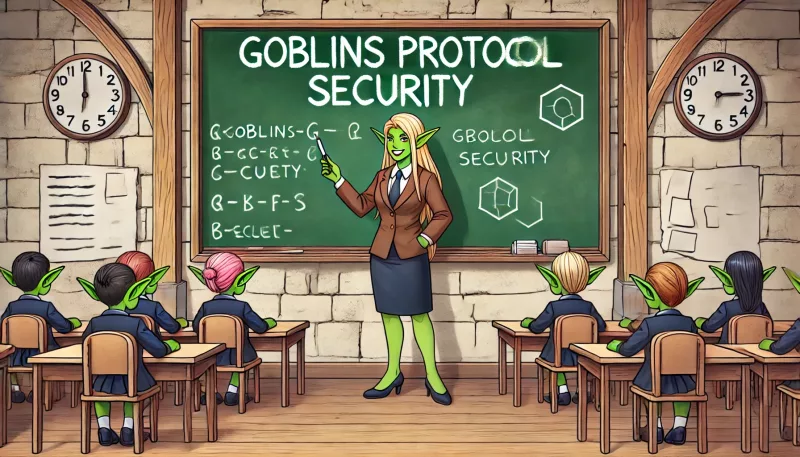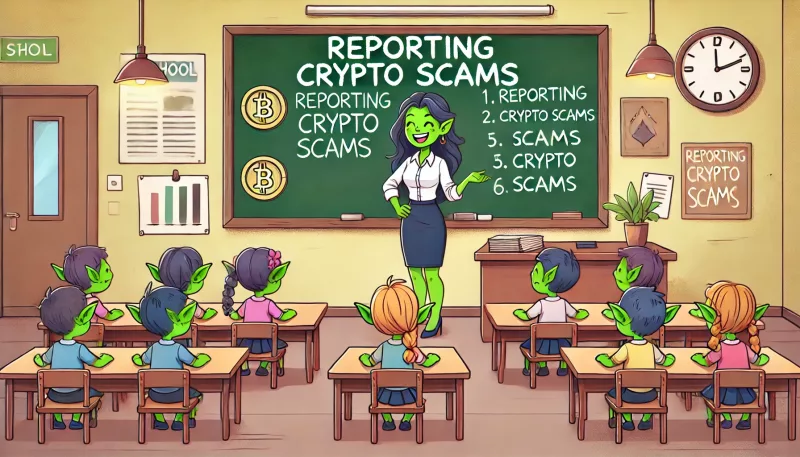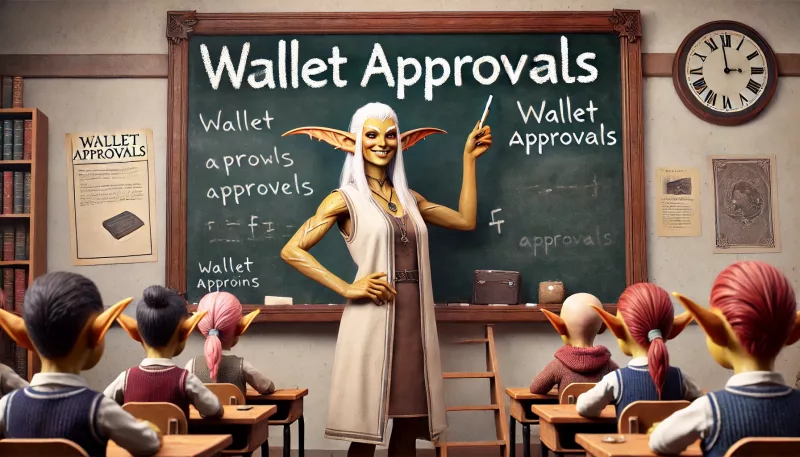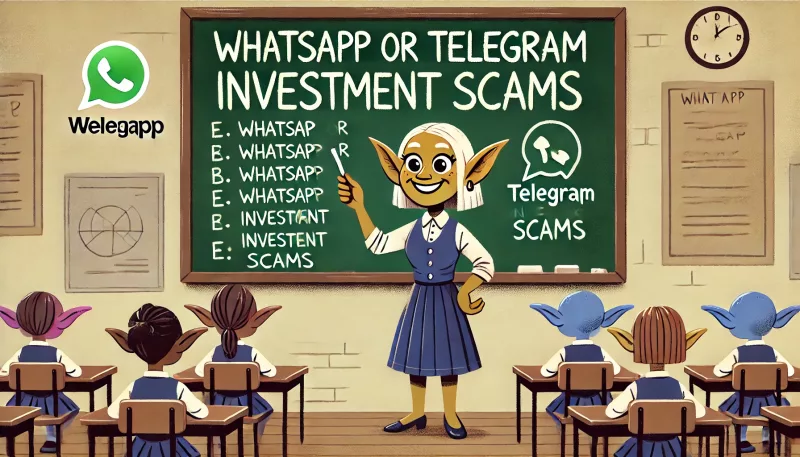DOCUMENTS

Welcome to the FAQ section of our MetaDEX. This page is designed to answer all your questions and provide comprehensive insights into our innovative platform. Here, you’ll find detailed explanations about our MetaDEX-driven features, security protocols, trading processes, and more. Our goal is to ensure you have all the information you need to navigate and make the most of our MetaDEX. Stay informed and explore how our advanced technology is transforming the landscape of cryptocurrency trading.
What is Goblins Podcast
Introduction
Goblins Cash is a next‑generation automated market maker (AMM) engineered to become Binance’s primary liquidity hub. By blending a powerful liquidity–incentive engine, vote‑locked governance, and a user‑friendly interface, the protocol gives projects and traders the deep, efficient pools they need to thrive. Goblins Cash is a community‑driven fork of Aerodrome Finance, adapted and expanded for the Binance ecosystem and was launched on June 1, 2025.
Key Features
The protocol is designed to facilitate token swaps and to generate trading‑fee revenue by attracting and rewarding liquidity.
-
Liquidity incentives – Each seven‑day “epoch” distributes freshly‑minted $GOB emissions to liquidity‑provider (LP) gauges. A pool’s share of emissions is proportional to the votes it receives during the epoch’s snapshot. Only LP tokens deposited and staked in these gauges earn emissions.
-
veGOB vote‑lock governance – Holders may lock their $GOB to mint veGOB, granting the right to vote on the next epoch’s emission allocations.
-
Voter rewards – veGOB voters receive:
-
100 % of the trading fees generated across the protocol during the previous epoch, and
-
Any extra voter incentives (“bribes”) offered for the current epoch.
-
-
Epoch cadence –
-
Start: Thursday 00 : 00 UTC
-
End: Wednesday 23 : 59 UTC
-
Votes, emissions, fees, and incentives are settled at the close of each epoch and applied to the next.
-
By aligning LPs, voters, and builders around a transparent incentive loop, Goblins Cash aims to deliver sustainable, protocol‑owned liquidity for the entire Binance DeFi landscape.
What are the Tokenomics Podcast
Goblins MetaDEX Tokenomics
Welcome to the tokenomics for the Goblins MetaDEX! This document outlines the dual-token system and the initial distribution strategy designed to foster a robust and engaged community. The Goblins MetaDEX introduces a revised initial token supply and distribution model, ensuring alignment with the long-term vision of the protocol.
Dual-Token System
The Goblins MetaDEX utilizes a dual-token system to separate utility from governance, enhancing both functionality and long-term protocol alignment:
- $GOB — The ERC-20 utility token of the protocol.
- $veGOB — The ERC-721 governance token, issued as a non-fungible token (veNFT).
$GOB — Utility Token
$GOB serves as the primary utility token within the Goblins Cash ecosystem. It is distributed to liquidity providers as rewards through scheduled emissions, incentivizing participation and liquidity provision for the protocol.
$veGOB — Governance Token
$veGOB is used for protocol governance, allowing holders to participate in key decisions shaping the future of Goblins Cash. Any $GOB holder can choose to lock their tokens and receive a $veGOB NFT (also referred to as a “Lock” or “veNFT”) in return. Users can add more $GOB to an existing veNFT at any time, which increases its locked $GOB balance and, consequently, its voting power.
Lock Duration and Voting Power
The duration for which $GOB can be locked to mint $veGOB can be set for up to 4 years. The voting power of a $veGOB NFT scales linearly with the lock duration:
- 100 $GOB locked for 4 years = 100 $veGOB voting power
- 100 $GOB locked for 1 year = 25 $veGOB voting power
The longer the lock period chosen by the user, the greater the voting power and influence their veNFT will carry in protocol governance.
Auto-Max Lock Option
The Goblins MetaDEX also supports an Auto-Max Lock feature for veNFTs. When this feature is enabled for a specific veNFT, that Lock is treated as if it is always locked for the maximum duration (4 years). This means its voting power remains constant over time and does not decay. This feature can be toggled on or off by the owner for each individual veNFT.
Initial Distribution for the Goblins MetaDEX
The total supply of $GOB at the launch of the Goblins MetaDEX will be 37,000 tokens. This initial supply will be allocated as follows:
| Category | $GOB Allocation | Percentage of Total Supply | Notes |
|---|---|---|---|
| Public Goods Fund | 4,500 $GOB | 12.16% | Auto Max-Locked |
| Airdrop for veGOB Lockers | 32,500 $GOB | 87.84% | $GOB for users to lock for $veGOB |
What are the Emissions Podcast
Emissions
The total initial supply of $GOB is 37,000. Initially, all $GOB tokens are liquid, and no $veGOB is pre-allocated.
Emission Schedule
Weekly emissions begin at 1,000 $GOB (1% of the initial supply) and will follow a structured, three-phase rollout to balance early growth with long-term sustainability:
- Take-off Phase (Epochs 1–14): Emissions will increase by 3% per week during the first 14 epochs. This phase is designed to jumpstart protocol activity and accelerate onboarding of ecosystem partners and liquidity providers.
- Cruise Phase (Epoch 15 onward): After epoch 14, weekly emissions will decay by 1% per epoch, gradually reducing inflation as the protocol scales and matures.
- Goblin Fed Phase (Approx. Epoch 67+): Once emissions drop below 890 $GOB per epoch, governance over emission levels will be handed to $veGOB holders through the Goblin Fed system. Users will need to lock their liquid $GOB to obtain $veGOB to participate in governance. Each epoch, veGOB voters will choose one of the following actions:
- Increase emissions by 0.01% of total initial supply (equivalent to 8.9 $GOB, ≈0.52% annually)
- Decrease emissions by 0.01% of total initial supply (equivalent to 8.9 $GOB, ≈0.52% annually)
- Maintain emissions at their current level
Votes are decided by simple majority, and changes take effect one full epoch after a vote passes. Emission limits are capped at 1.00% of total initial supply per week (equivalent to 1,000 $GOB, 52% annualized) and floored at 0.01% of total initial supply per week (equivalent to 8.9 $GOB, 0.52% annualized).
Emission Rewards
Each epoch, $GOB emissions are allocated to liquidity pools in proportion to the $veGOB votes those pools receive. Liquidity providers (LPs) who stake their positions into gauges earn a share of $GOB emissions based on stake size and duration. To direct emissions and earn rewards, $GOB holders will need to lock their tokens to acquire $veGOB and vote.
Rewards accumulate continuously throughout the epoch and are available for claiming at any time.
Team Emissions
To ensure sustainable growth and continued development of the Goblins Cash ecosystem—including decentralization, tooling, documentation, and community initiatives—10% of weekly emissions are allocated to a team multisig wallet. This supports the team’s efforts in maintaining, upgrading, and promoting the protocol.
What are Liquidity Pools and Rewards Podcast
Liquidity Pools & Rewards Explained
Understanding Liquidity Pools in Goblins Cash V2
The core functionality of Goblins Cash V2 is to allow users to exchange tokens in a secure way, with low fees and low slippage.
Slippage is the difference between the current market price of a token and the price at which the actual exchange/swap is executed…
To provide access to the best rates on the market, Goblins Cash V2 utilizes different types of tokens:
- Correlated tokens: Assets expected to trade closely in price (e.g., stablecoins like $USDC, $DAI).
- Uncorrelated tokens: Assets whose prices are not expected to move closely (e.g., $GOB, $BTC).
Goblins Cash V2 offers different liquidity pool types… primarily Stable Pools and Volatile Pools…
The protocol’s router evaluates pool types… uses time-weighted average prices (TWAPs)…
The deeper the liquidity… the smaller the slippage…
Pool Types:
Stable Pools: Designed for tokens with little to no volatility relative to each other. Common formula: x³y + y³x ≥ k
Volatile Pools: Designed for tokens with higher price volatility. Common formula: x × y ≥ k
Concentrated Liquidity (CL) Pools: Allow LPs to deposit assets within a specific price range… using “ticks”…
- Tick Spacing: Minimum price movement between ranges. Examples: Stable tokens (0.01%-0.5%), Volatile tokens (2%+).
- CL Pool Symbols: Often indicate nature, e.g.,
CL1-wstETH/WETH. - CL Pool Fees: Can be adjusted flexibly.
Understanding Rewards & APR Calculation in Goblins Cash V2
Providing liquidity… can earn rewards from transaction fees and potential token incentives (emissions).
Calculating APRs (Annual Percentage Rate):
For Basic Pools: APR generally based on rewards earned / total value of staked liquidity.
For Concentrated Liquidity (CL) Pools: APR calculation is nuanced, considering rewards for liquidity in the active trading price range.
What are Voting Rewards Podcast
Voting Rewards Explained
Fees
Token pairs in Goblins Cash V2 capture fees from the trading volume enabled by the liquidity in each pool.
The fees collected by staked Liquidity Providers (LPs) in the previous epoch are often deposited as incentives for the current voting epoch.
Fee rewards are distributed in the same tokens as the liquidity pool tokens from which they originate. For example, if the pool is a Goblins Cash V2 AMM pool for GOB/USDC, the distributed fee tokens would be $GOB and $USDC.
Fee rewards that are part of direct LP earnings are typically distributed as accrued and can be claimed at any time. Fee rewards deposited as voter incentives are usually available for claim after the epoch changes (e.g., Thursday 00:00 UTC) and are distributed proportionally to the voting power cast by a voter (e.g., $veGOB).
Incentives
In addition to fee rewards, liquidity pools can receive external voter rewards from protocols or other participants (these are often known as incentives).
Incentives can be deposited for whitelisted tokens and are distributed only to voters on that specific pool, proportionally to their share of pool votes.
These rewards are typically available for claim after the epoch changes (e.g., Thursday 00:00 UTC) and are distributed proportionally to the voting power cast by a voter (e.g., $veGOB).
Rewards Claim
Rebase rewards, if applicable within the Goblins Cash V2 system, are typically claimable after a new epoch has started (e.g., Thursday 00:00 UTC).
An example of incentives, voting, and rewards claim timeline:
- A new epoch starts (e.g., Thursday 00:00 UTC).
- Incentives are deposited by projects or individuals at any point during the epoch.
- Voters use their voting power (e.g., $veGOB) to vote for their preferred pools.
- Once the next epoch arrives (e.g., the following Thursday 00:00 UTC), users are able to claim the rewards earned from the concluded epoch.
What are Locks Podcast
Locks Explained
Understanding Locks (veNFTs) in Goblins Cash V2
Locking your GOB tokens (or other designated tokens) allows you to participate in protocol governance and earn a share of protocol fees and emissions. These locks are often represented as veNFTs (Vote-Escrowed Non-Fungible Tokens).
Key Aspects of Locks:
- Voting Power: The longer you lock your tokens, and the greater the amount, the more voting power (e.g., veGOB) you receive.
- Rewards: This voting power is then used to vote on which liquidity pools receive token emissions. As a voter, you typically earn a share of the transaction fees from the pools you vote for, plus a portion of the emissions.
- Boosties: Some systems allow locks to boost the rewards earned from liquidity provision.
The APR for rewards earned via locks and voting is influenced by the total rewards distributed and the total voting power participating.
Understanding Liquidity Pools in Goblins Cash V2
The core functionality of Goblins Cash V2 is to allow users to exchange tokens in a secure way, with low fees and low slippage.
Slippage is the difference between the current market price of a token and the price at which the actual exchange/swap is executed…
To provide access to the best rates on the market, Goblins Cash V2 utilizes different types of tokens:
- Correlated tokens: Assets expected to trade closely in price (e.g., stablecoins like $USDC, $DAI).
- Uncorrelated tokens: Assets whose prices are not expected to move closely (e.g., $GOB, $BTC).
Goblins Cash V2 offers different liquidity pool types… primarily Stable Pools and Volatile Pools…
The protocol’s router evaluates pool types… uses time-weighted average prices (TWAPs)…
The deeper the liquidity… the smaller the slippage…
Pool Types:
Stable Pools: Designed for tokens with little to no volatility relative to each other. Common formula: x³y + y³x ≥ k
Volatile Pools: Designed for tokens with higher price volatility. Common formula: x × y ≥ k
Concentrated Liquidity (CL) Pools: Allow LPs to deposit assets within a specific price range… using “ticks”…
- Tick Spacing: Minimum price movement between ranges. Examples: Stable tokens (0.01%-0.5%), Volatile tokens (2%+).
- CL Pool Symbols: Often indicate nature, e.g.,
CL1-wstETH/WETH. - CL Pool Fees: Can be adjusted flexibly.
Understanding Rewards & APR Calculation in Goblins Cash V2
Providing liquidity… can earn rewards from transaction fees and potential token incentives (emissions).
Calculating APRs (Annual Percentage Rate):
For Basic Pools: APR generally based on rewards earned / total value of staked liquidity.
For Concentrated Liquidity (CL) Pools: APR calculation is nuanced, considering rewards for liquidity in the active trading price range.
Is Goblins Audited Podcast
Introduction
For our MetaDEX, Goblins forked a set of smart contracts (the “Contracts”) from Aerodrome Finance. Aerodrome Finance inherited their contract architecture and full security maintenance from Velodrome V2. Velodrome V2 has been audited and runs a bug-bounty program.
The Contracts have been extensively audited by reputable security firms, ensuring their robustness and security. As part of our commitment to maintaining these high standards, we have conducted an internal review to verify the integrity of the Contracts to ensure they align with our specific requirements.
Forking Process
The forking process involved two key steps:
- Code Review: A detailed review of the Contracts codebases was conducted to understand their functionality and structure.
- Testing: Extensive testing was performed to ensure the Contracts functioned as intended.
Reliance on Audits
Given the extensive audits already performed on the Contracts, Goblins Cash is relying solely on their audits. By leveraging the robust and secure foundation of the Contracts, we aim to provide a high level of security and reliability for our users. Here are the audit reports:
Internal Review Process
Additionally, we conducted an internal review to ensure the Contracts meet our standards. Our internal review process included the following stages:
- Manual Review: Conducted a review of the Contracts to identify any potential security risks or logical errors. Verified the correctness of the business logic and ensured compliance with the intended functionality.
- Functional Testing: Deployed the Contracts on a testnet to simulate various scenarios and interactions. Executed a series of test cases to ensure the contracts behaved as expected under different conditions.
Conclusion
The internal review of the Contracts has been successfully completed, and the Contracts have been verified to meet Goblins’ standards of security and reliability.
We extend our gratitude to the Aerodrome Finance and Velodrome teams for their pioneering work and to the security experts who contributed to the original audits. As we move forward, Goblins remains committed to continuous improvement and transparency, ensuring that our users can trust and rely on the integrity of our platform.
Goblins Protocol Deployment Addresses Podcast
Summary of Goblins Protocol Deployment Addresses
The Goblins Protocol leverages various smart contracts for its decentralized ecosystem on the Binance Blockchain. These Goblins Deployment Addresses ensure efficient operation, security, and upgrades within the Goblins ecosystem.
| GOB V2 Contracts | BNB Address |
|---|---|
| AirdropDistributor | 0xbfe17c477742A23E5D5fBe987Ca8Cd9fA8a9bF83 |
| ArtProxy | 0x859d74725b3e40494D2E9B64be445E6485E92aFB |
| Distributor | 0xBb66692Ad806085D6Da62f9584424451a10e763B |
| FactoryRegistry | 0x04cbddCCfBcA3890a0Aef10C9Ad6e18268D6f7c7 |
| Forwarder | 0xF3A9a702BE888E0ac6Ae73C0b3141bfEED04530D |
| GOB | 0x62440594BE441fAec7F9fd4a3A8D1F4AD86E2987 |
| GaugeFactory | 0xfc60833B9608eB33129b90C77C1f3F9e39991B8f |
| ManagedRewardsFactory | 0xEF73e53AF2304f112c89f054966b28DDCf4a9696 |
| Minter | 0xeA391d2d5FDC88D90FA2a60fB2982e712A9AD420 |
| PoolFactory | 0xd4603DE52a29ABa9B046B248ea7d0ac69801548c |
| Router | 0xeCe23FBaEf237BbE8696258717CDdAfB21a0e4C9 |
| Voter | 0x83385E207600Fd1401770E642e5dE12d6324AfF8 |
| VotingEscrow | 0x4EBcF27A9381694F6121a560b47c833A3C86f101 |
| VotingRewardsFactory | 0x4cD7A9A5b60324DEfDB74067C072e5F21c6573bF |
| Relay Contracts | BNB Address |
|---|---|
| AutoCompounderFactory | 0x0eb0fe1dbA645f8EcdC393573Ef8DC5BD4B28403 |
| KeeperRegistry | 0x080A6659239aB4f585E04e2e8581889400Ef375D |
| Optimizer | 0x7EE75A9CC5FdFA07e92Bbcc5dD5475b19fd8ff2b |
| OptimizerRegistry | 0xa146d62dA338C0A4FE98EbEB45A2a698e40b389C |
| RelayFactoryRegistry | 0x5Bbe4846dd72A525b18AC88aE96AF5961e8D94A8 |
| AutoConverterFactory | 0x501D9aC7bEA1542EEDDE97b29be82663334f5E64 |
| Helper Contracts | BNB Address |
|---|---|
| Permit2 | 0x592B5C472aF554B4E33a1A0e9e02b04664dd788B |
| UniversalRouter | 0xaF57b3A6D13404B260d8d6a19357216d8a70668F |
| UnsupportedProtocol | 0x341e53e3a0642881C589BC9fA1201754D9b9317D |
| Concentrated Liquidity Contracts | BNB Address |
|---|---|
| GaugeFactory | 0xd1204C1BDA16d02970d8B07aC2B753b28b865Da2 |
| GaugeImplementation | 0x8fF41Fa914bE9FbCF0d6F3b79653C8b5f2Fbe4B0 |
| MixedQuoter | 0x5B23870CB22125f372E651CD2DCc19762dBFE383 |
| NonfungiblePositionManager | 0xC8AB3794b47aCBAd975301993D6dd15B409bC390 |
| NonfungibleTokenPositionDescriptor | 0x3E7380D25a54320a4D5C1D283ed4813B40a89166 |
| PoolFactory | 0x7A3027f7A2f9241c0634a7f6950D2D8270aC0563 |
| PoolImplementation | 0x612e163b2336bAf23e33214F8a030058E1E9086f |
| Quoter | 0x45bb208961D6214767505596B3Df37da23BbF92c |
| SwapFeeModule | 0xb81b1E470cA5F8366c543Ee724c73aBb4D42752d |
| SwapRouter | 0x64BE4d9835abCDBA26Cc3E89c1788C713861d2b4 |
| UnstakedFeeModule | 0xE2A8CF0f3b9A613d6a5772a3883Ce35408bcdfD3 |
| Sugar Contracts | BNB Address |
|---|---|
| router | 0xeCe23FBaEf237BbE8696258717CDdAfB21a0e4C9 |
| factory | 0xd4603DE52a29ABa9B046B248ea7d0ac69801548c |
| lpSugar | 0xe060bc9f12ED95EA1525f4c8628F7a048804Ab15 |
| veSugar | 0xDC81F216C4433bD93A6bF696C61F867251d3ADb6 |
| rewardSugar | 0x544CBEb10C743958d117f2898d4Cb111aBAf2cE1 |
| relaySugar | 0x97F87783Ac34616d08e9715182cCBFE5eA0d886f |
| universalRouter | 0xaF57b3A6D13404B260d8d6a19357216d8a70668F |
| voter | 0x83385E207600Fd1401770E642e5dE12d6324AfF8 |
| votingEscrow | 0x4EBcF27A9381694F6121a560b47c833A3C86f101 |
| rewardDistributor | 0xBb66692Ad806085D6Da62f9584424451a10e763B |
| nfpm | 0xC8AB3794b47aCBAd975301993D6dd15B409bC390 |
| clFactory | 0x7A3027f7A2f9241c0634a7f6950D2D8270aC0563 |
| offchainOracle | 0x5e5035560dD68D03EC6C6644f29dD217192C4464 |
| LP_SUGAR_ADDRESS_56 | 0xe060bc9f12ED95EA1525f4c8628F7a048804Ab15 |
| REWARDS_SUGAR_ADDRESS_56 | 0x544CBEb10C743958d117f2898d4Cb111aBAf2cE1 |
| VE_SUGAR_ADDRESS_56 | 0xDC81F216C4433bD93A6bF696C61F867251d3ADb6 |
| RELAY_SUGAR_ADDRESS_56 | 0x97F87783Ac34616d08e9715182cCBFE5eA0d886f |
Additional Content and Considerations
The Goblins Protocol’s deployment addresses are crucial to its operation. Understanding these components is essential for users and developers interacting with the protocol, as they ensure efficient, secure, and upgradeable processes within the Goblins ecosystem.
Importance of Understanding Deployment Addresses
For developers and advanced users, knowledge of these deployment addresses provides deeper insight into how the Goblins Protocol operates. Each address corresponds to a specific function, all of which contribute to the smooth functioning of the MetaDEX.
- Security: These smart contracts are designed with security in mind, ensuring that the Goblins ecosystem remains robust against potential threats.
- Efficiency: By leveraging these deployment addresses, the protocol can efficiently manage operations, ensuring fast and reliable transactions.
How to Utilize This Information
Understanding these deployment addresses is beneficial for users looking to interact more deeply with the Goblins Protocol. Whether you’re providing liquidity or voting, knowing the underlying smart contracts can help you navigate the ecosystem more effectively.
- Developers: Can use this information to build on top of the Goblins Protocol, creating new applications or integrating existing ones with its ecosystem.
- Advanced Users: Gain insights into how their transactions are processed and how to optimize their interactions with the platform.
Conclusion
The deployment addresses of the Goblins Protocol are fundamental to its decentralized operations on the BNB Blockchain. By understanding these addresses and their functions, users can better engage with the protocol, ensuring they maximize the benefits while maintaining security and efficiency in their transactions.
Official Goblins Links Podcast
Introduction to the Goblins Community and Participation
Welcome to the Goblins community, where we value active participation and engagement from our users, known as “Rogues.” To foster a vibrant and secure environment, we’ve compiled all official Goblins links below, including our Website, GitHub, Social channels, Telegram, Medium, and more. These links are essential for staying informed, providing feedback, and participating in the community.
Whether you’re offering customer support, suggesting DEX enhancements, or reporting scams, bugs, or other issues, using these official channels ensures your voice is heard. Your contributions help strengthen and grow the Goblins ecosystem. Stay connected and contribute to the development and security of Goblins by engaging through these official links.
Official Links
Goblins Email Podcast
Goblins Emails: Staying Informed and Secure
Goblins emails are designed for customer support and to keep our community safe and informed about new products, features, community events, research, and more. Here’s what you need to know to make the most of these communications while ensuring your security.
Important Email Information
- Official Emails:
- Trusted Source: Only interact with emails from the address [email protected]. This is the official email address for Goblins communications.
- Privacy:
- Email Security: Your email address will never be linked to your wallet address, ensuring your privacy is maintained.
- Security:
- No Sensitive Information Requests: Goblins emails will never ask for your seed phrase or personal information.
- Safe Practices: Never share your seed phrase or connect your wallet to unknown websites, even if prompted by an email.
Additional Tips and Considerations
- Recognizing Phishing Attempts:
- Suspicious Emails: Be wary of emails that claim to be from Goblins but come from addresses other than [email protected]. These could be phishing attempts.
- Unexpected Links: Do not click on links or download attachments from suspicious emails.
- Engagement and Feedback:
- Community Involvement: Participate in community events and provide feedback through official Goblins emails to help improve products and services.
- Research and Insights: Take advantage of the research and insights shared in emails to stay informed about industry trends and best practices.
- Additional Security Measures:
- Two-Factor Authentication: Enable two-factor authentication (2FA) on your email account to add an extra layer of security.
- Secure Email Providers: Use secure and reputable email providers to protect your email communications.
Conclusion
Goblins emails are a valuable resource for customer support and staying informed about the latest developments in the Goblins ecosystem. By recognizing official emails, maintaining your privacy, and following security best practices, you can safely benefit from the information and updates provided. Stay engaged, informed, and secure to make the most of your experience with Goblins.
Airdrop Scams Podcast
Protecting Yourself from Airdrop Scams
Airdrops are a popular method for distributing NFTs and tokens, but they are also a common tool for scammers to steal assets from unsuspecting users. Here’s how to recognize and protect yourself from these scams.
Understanding Airdrop Scams
- Common Tactics:
- The Scam Process:
- Approval Trick: During the redemption process, scammers trick victims into approving a malicious contract.
- Asset Theft: Once approval is granted, scammers gain access to the victim’s cryptocurrency wallet and transfer all tokens and NFTs out.
Steps to Protect Yourself
- Be Cautious with Unexpected Airdrops:
- Do Not Claim: If you receive an NFT or token from an unknown sender, do not attempt to claim or redeem it.
- Verify Sources: Only interact with airdrops from verified and trusted sources.
- Research URLs and Offers:
- Check the URL: If an airdrop includes a URL, research the website thoroughly before attempting to claim anything.
- Look for Red Flags: Be wary of any site that requires you to approve contracts or provide sensitive information.
- Handling Unexpected Airdrops:
- Do Not Swap or Sell: Avoid attempting to swap or sell unexpected NFTs or tokens as these actions could trigger the scam.
- Consider Wallet Safety: If you have already interacted with a suspicious airdrop, transfer your assets to a new wallet. Note that transfers will incur network costs.
Additional Tips and Considerations
- Use Reputable Security Tools:
- Contract Screening: Use tools like ScamSniffer to screen any contract you are asked to approve.
- Wallet Security: Ensure your wallet has robust security features and is regularly updated.
- Enable Alerts and Notifications:
- Wallet Alerts: Set up notifications for any unusual activity in your wallet.
- Community Alerts: Follow trusted crypto communities and forums for alerts about new scams and security threats.
- Educate Yourself and Stay Informed:
- Scam Awareness: Learn about common airdrop scam tactics and how to recognize them.
- Continuous Learning: Stay updated on the latest security practices and scam prevention tips.
Conclusion
Airdrop scams are a serious threat in the cryptocurrency space. By being cautious with unexpected airdrops, thoroughly researching URLs and offers, and using reputable security tools, you can protect yourself from these malicious schemes. Always stay informed and vigilant to safeguard your assets from scammers.
Customer and IT Support Scams Podcast
Beware of Customer and IT Support Scams
A common scam involves individuals posing as customer or IT support representatives from reputable organizations, including Goblins. These scammers target users seeking assistance and attempt to trick them into providing personal information for fraudulent purposes.
Recognizing Customer and IT Support Scams
- Impersonation:
- Fake Representatives: Scammers pose as customer or IT support from trusted organizations.
- Urgent Help Requests: They often create a sense of urgency to make you act quickly without verifying their identity.
- Information Requests:
- Personal Data: They ask for personal information such as recovery phrases, private keys, passwords, or other sensitive data.
- Remote Access: They may request remote access to your device to “fix” a problem, but actually aim to steal your information.
Protecting Yourself from Support Scams
- Deny Remote Access:
- No Remote Control: Never allow anyone to remotely access your device, regardless of how convincing they seem.
- Verify Identity: Always verify the identity of the support representative through official channels before taking any action.
- Protect Your Sensitive Information:
- Keep Private Keys Secure: Never share your recovery phrase, private keys, or passwords with anyone.
- Official Communications: Be aware that legitimate support will never ask for your sensitive information.
- Goblins’ Official Policies:
- No Fund Transfers: Goblins will never ask you to send funds to another wallet address or bank account.
- No Software Downloads: Goblins will never ask you to download software onto your device for support purposes.
Additional Tips and Considerations
- Verify Authenticity:
- Official Channels: Contact support directly through official Goblins channels to verify the authenticity of any support request.
- Website Check: Use the official Goblins website to find contact information and support resources.
- Stay Informed:
- Awareness: Educate yourself about common scam tactics and stay updated on the latest security practices.
- Community Alerts: Participate in community forums and groups to stay informed about potential scams and share experiences.
- Enable Security Measures:
- Two-Factor Authentication: Enable two-factor authentication on your accounts for added security.
- Secure Devices: Ensure your devices are secured with up-to-date antivirus software and firewalls.
- Report Suspicious Activity:
- Contact Goblins: If you suspect any fraudulent activity related to Goblins, report it immediately through official channels.
- Notify Authorities: Report the scam to local law enforcement and relevant regulatory bodies to help prevent others from becoming victims.
Conclusion
Scammers posing as customer or IT support representatives can be highly convincing, but by following best practices such as denying remote access, protecting your sensitive information, and verifying support requests through official channels, you can safeguard yourself from these fraudulent schemes. Stay vigilant, informed, and proactive in securing your digital assets and personal information.
Fake Giveaway Scams Podcast
Protecting Yourself from Fake Giveaway Scams
Scammers often promote fake giveaways to trick users into sending tokens or approving malicious contracts. These fraudulent activities can lead to significant financial loss. Here’s how to recognize and protect yourself from these scams.
Recognizing Fake Giveaway Scams
- Common Tactics:
- Social Media Promotions: Scammers post giveaway promotions or message you on platforms like Twitter, Discord, etc., pretending to be from legitimate companies.
- False Claims: Messages or posts typically claim that you have won something or that a notable token project or company is hosting a giveaway or airdrop.
- The Scam Process:
- Link and Address: Scammers provide a link and ask you to send tokens (e.g., BCH, PEPE) to a cryptocurrency wallet address they provide or approve a contract in your wallet.
- False Promises: They promise to double the amount you send in return.
Risks of Participating in Fake Giveaways
- Token Loss:
- Irretrievable Tokens: Tokens sent to the scammer’s address are often irretrievable.
- Wallet Compromise: Approving a malicious contract can give scammers access to your wallet, putting all your tokens at risk.
Steps to Protect Yourself
- Verify Accounts and Promotions:
- Check Authenticity: Always verify the account messaging you or posting the promotion. If you cannot confirm their connection to the legitimate company, they are likely scammers.
- Use Verified Channels: Contact the company or team through official, verified channels to confirm the legitimacy of the giveaway or airdrop.
- Be Cautious with Messages:
- Trusted Contacts Only: Only accept messages from people you trust. Be skeptical of unsolicited messages, especially those offering free tokens or significant returns.
- Research and Confirm:
- Investigate: Look into the details of the giveaway. Check the official website and social media channels of the company to see if the promotion is mentioned.
- Community Feedback: See if other users are talking about the giveaway and whether it has been confirmed as legitimate.
Additional Tips and Considerations
- Use Security Tools:
- Contract Screeners: Utilize tools like ScamSniffer to screen any contracts you are asked to approve.
- Wallet Security: Ensure your wallet is equipped with robust security features and that you regularly update your security settings.
- Stay Informed:
- Learn About Scams: Educate yourself on common scam tactics and stay updated on the latest threats in the crypto space.
- Join Communities: Participate in crypto communities to share experiences and learn about new scams and security practices.
- Enable Alerts and Notifications:
- Wallet Alerts: Set up alerts for any unusual activity in your cryptocurrency wallet.
- Platform Notifications: Enable notifications from your social media and messaging platforms for updates on suspicious activities.
Conclusion
Fake giveaway scams are a prevalent threat in the cryptocurrency world. By verifying the authenticity of promotions, being cautious with unsolicited messages, and using security tools, you can protect yourself from these fraudulent schemes. Always conduct thorough research and stay informed to safeguard your assets from scammers.
Goblins Protocol Security Podcast
Goblins Commitment to Protocol Security in the Web3 Ecosystem
The protocol security of Goblins recognizes the critical importance of security throughout the Web3 ecosystem and is dedicated to building secure and reliable products.
Our Commitment
We take security very seriously and continuously strive to enhance our products and processes. Our commitment includes:
- Ongoing Improvements: Constantly working to improve the security of our products and processes to protect our users.
- Community Involvement: Welcoming the community to review our code and actively encouraging the reporting of any security issues.
Reporting a Protocol Security Vulnerability
If you believe you have identified a security vulnerability in any of our products or services, please report it to us immediately. Your proactive approach helps us maintain a secure environment for all users.
Additional Tips and Considerations
- Review Our Code:
- Open Source: Our code is available for public review, fostering transparency and community trust.
- Contribute: If you have expertise in protocol security, consider contributing by reviewing our code and suggesting improvements.
- Stay Informed:
- Security Updates: Regularly check for updates and security patches for the Goblins platform.
- Community Alerts: Join Goblins community channels to stay informed about any potential protocol security issues and how to address them.
- Protect Your Assets:
- Secure Wallets: Use reputable wallets with strong security features to store your assets.
- Private Keys: Keep your private keys secure and never share them with anyone. Consider using hardware wallets for enhanced protocol security.
- Be Vigilant:
- Phishing Attacks: Be cautious of phishing attacks and always verify the authenticity of any communication related to Goblins.
- Regular Audits: Conduct regular security audits of your own systems if you are integrating Goblins products or services.
Conclusion
Goblins is deeply committed to ensuring the protocol security of the Web3 ecosystem. By continually improving our products and processes and engaging the community in security reviews, we aim to create a safe and trustworthy environment for all users. If you discover a security vulnerability, please report it promptly to help us maintain the highest security standards. Your vigilance and participation are crucial to the ongoing security of the Goblins ecosystem.
Hiring Scams Podcast
Beware of Hiring Scams Posing as Recruiters
Scammers may pose as recruiters from organizations, including Goblins, with fake job offers. Here’s how to recognize and protect yourself from these fraudulent schemes:
Recognizing Hiring Scams
- Fake Job Offers:
- Unsolicited Offers: Be cautious of unsolicited job offers from unknown recruiters.
- Too Good to Be True: Job offers promising high salaries with minimal qualifications or effort should raise suspicion.
- Requests for Payment:
- Training Fees: Scammers may ask for payment for providing “training” or other services.
- Upfront Costs: Legitimate companies do not ask for payment as part of the job application process.
- Convincing Documents:
- Official-Looking Emails: Scammers often use convincing emails and documents to appear legitimate.
- Personal Information: They may ask for personal information, aiming to steal your identity or commit fraud.
Protecting Yourself from Hiring Scams
- Verify Recruiter Credentials:
- Official Channels: Confirm job offers through official Goblins communication channels or the company’s official website.
- Contact Directly: Reach out directly to the company’s HR department to verify the legitimacy of the job offer.
- Never Pay for a Job:
- No Upfront Fees: Legitimate companies do not require payment for job applications, training, or placement services.
- Report Requests: If asked for money, report the recruiter to the company and relevant authorities.
- Protect Personal Information:
- Limit Sharing: Do not share personal information, such as your Social Security number or banking details, with unverified recruiters.
- Secure Documents: Be cautious about sharing your resume or other documents that contain sensitive information.
Additional Tips and Considerations
- Research the Company:
- Company Website: Check the company’s official website for job listings and contact information.
- Online Reviews: Look for reviews and feedback about the company’s hiring practices.
- Check Email Authenticity:
- Email Domain: Verify that the email domain matches the official company domain.
- Phishing Signs: Look for signs of phishing, such as grammatical errors, urgent language, and suspicious links.
- Enable Security Measures:
- Email Security: Use spam filters and email security settings to reduce the risk of scam emails reaching your inbox.
- Two-Factor Authentication: Enable two-factor authentication on your email account for added security.
- Engage with Trusted Networks:
- Professional Networks: Use professional networking sites like LinkedIn to verify recruiters and job offers.
- Community Forums: Participate in industry forums and groups to get insights and advice on job offers and recruitment practices.
Reporting Hiring Scams
- Contact Goblins: If you encounter any employment scams related to Goblins, please reach out to us immediately.
- Report to Authorities: Report the scam to local law enforcement and relevant regulatory bodies to help prevent others from falling victim.
Conclusion
Hiring scams can be highly convincing, but by verifying recruiter credentials, avoiding upfront payments, and protecting your personal information, you can safeguard yourself from these fraudulent schemes. Always verify job offers through official channels and report any suspicious activity to Goblins and the relevant authorities. Stay informed and vigilant to protect your career and personal information.
Honeypot Scams Podcast
Beware of Honeypot Scams in Cryptocurrency
Honeypot scams are tokens specifically designed to trap buyers by preventing them from selling. Scammers lure victims into purchasing these tokens, then use the token’s contract to block sales, ultimately leading to a “rug pull.”
Understanding Honeypot Scams
Scam Tactics:
- Purchase Trap: Victims are tricked into buying a token.
- Sale Block: The token’s contract prevents the victim from selling their tokens.
- Rug Pull: Scammers remove liquidity from the pool, making the token worthless and unsellable, and steal the crypto in the liquidity pool.
Methods Scammers Use to Prevent Token Sales
- Blacklist Function: Prevents specific addresses from trading.
- Whitelist Function: Restricts trading to certain addresses only.
- Anti-Whale Function: Limits the number of tokens that can be transacted per wallet or overall.
- Cooldown Function: Implements a delay before tokens can be sold after purchase.
- Suspend Trading Function: Stops all buying and selling of the token.
- High Sell Tax: Imposes a high tax on sales, often above 10%, with anything over 50% making the token effectively untradable.
- Modifiable Tax: Allows the contract owner to change the transaction tax, potentially increasing it to a prohibitive level.
- Change Balance Function: Enables an address to alter the balance of tokens at other addresses.
- Proxy Contract: Allows the contract owner to modify token functions, affecting its price.
- Hidden Owner: Even if ownership is renounced, the developer can still manipulate the contract.
Protecting Yourself from Honeypot Scams
Contract Verification:
- GoPlus Labs: Run the contract address through GoPlus Labs for a security audit.
- TokenSniffer: Use TokenSniffer to check for known scam patterns in the contract.
Community and Market Checks:
- Multiple Address Sales: Verify if multiple addresses can sell the token using platforms like DexScreener and Defined.fi.
- Social Media Insights: Check Twitter and other social media platforms to see what holders are saying about the token.
Conduct Thorough Research:
- Read Reviews and Reports: Look for reviews and security reports on the token and its contract.
- Community Feedback: Engage with the crypto community to gather more insights and warnings about potential scams.
Conclusion
Honeypot scams pose a significant risk in the cryptocurrency market. By understanding the various methods scammers use and following the steps outlined above, you can protect yourself from falling victim to these scams. Always conduct thorough research and use reliable tools to verify the legitimacy of any token before investing. Stay informed, stay vigilant, and safeguard your crypto assets.
Investment Scams Podcast
Protecting Yourself from Scam Websites Posing as Goblins
Many crypto scam websites impersonate various companies, including Goblins, offering fraudulent crypto investment opportunities with promises of high returns and no risk. It’s crucial to be aware that Goblins will never engage in such practices.
Key Points to Remember
- Goblins’ Official Stance:
- No Investment Opportunities: Goblins does not offer any kind of crypto investment accounts, mining contracts, or pledges.
- No Direct Solicitations: Goblins will never message you to solicit investments or funds.
- Identifying and Reporting Crypto Scams:
- Suspicious Offers: If you encounter an crypto investment opportunity that seems too good to be true, it likely is.
- Report Scams: Report any scams you come across to the SEC, the FTC, or your state’s securities regulator.
Steps to Protect Yourself from Scams
- Check for Errors:
- Spelling and Grammar: Look for spelling and grammatical errors on the website. Scammers often have poorly constructed websites.
- Conduct Thorough Research:
- Company Validity: Investigate the legitimacy and trustworthiness of the company. Look for official documentation, reviews, and credible sources.
- Evaluate Opportunities Critically:
- Too Good to Be True: If an investment opportunity promises exceptionally high returns with no risk, it’s likely a scam.
- Verify Trusted Parties:
- Credibility Check: Only send funds to parties you have thoroughly vetted and trust. Look into their background and reputation in the industry.
Additional Tips and Considerations
- Use Official Channels:
- Official Website: Always use the official Goblins website and channels for information and transactions.
- Verify Contact Information: Ensure that any contact information matches what is provided on the official Goblins website.
- Be Cautious of Unsolicited Messages:
- Unexpected Offers: Be wary of unsolicited messages, emails, or calls that ask for investments or personal information.
- Phishing Attempts: Avoid clicking on links or downloading attachments from unknown sources.
- Enable Security Features:
- Two-Factor Authentication: Use two-factor authentication (2FA) on your accounts for added security.
- Secure Wallets: Store your cryptocurrency in reputable and secure wallets.
- Educate Yourself:
- Stay Informed: Keep yourself updated on common scams and fraud tactics in the cryptocurrency space.
- Community Engagement: Participate in crypto communities to share experiences and learn from others.
Conclusion
Scam websites posing as legitimate companies, including Goblins, are prevalent. Protect yourself by conducting thorough research, being critical of too-good-to-be-true opportunities, and only dealing with trusted parties. Report any suspicious activities to relevant authorities and stay informed about the latest security practices to safeguard your investments.
Reporting Crypto Scams Podcast
Reporting Crypto Scams and Understanding the Decentralized Nature of Goblins Protocol
If you have fallen victim to a crypto scam, it is crucial to take immediate action by contacting your local government authorities. Here are some steps and resources to help you report crypto scams:
Reporting Crypto Scams
- Contact Local Authorities:
- Local Cyber Crime Unit: Reach out to your local cyber crime authorities to report the scam.
- Government Authorities: Contact relevant government agencies that handle fraud and cyber crime in your country.
- Useful Reporting Links:
- Chainabuse.com: A platform for reporting and tracking crypto scams.
- FTC Report Fraud: Report fraud to the U.S. Federal Trade Commission.
- IC3 Complaint: File a complaint with the Internet Crime Complaint Center (IC3).
- Local Authorities: Check for local cyber crime reporting options in your country or region.
Decentralized and Censorship-Resistant Nature of Goblins Protocol
The Goblins protocol operates on a decentralized network, which means there is no central authority that can restrict or block users from interacting with it. This decentralized nature ensures censorship resistance, providing the following implications:
- No Central Authority:
- Unrestricted Access: Anyone can use the Goblins protocol without restrictions, as there is no governing body that can enforce limitations.
- Immutable Transactions: Transactions on the Goblins protocol are immutable and cannot be altered or reversed by any entity.
- User Responsibility:
- Security Awareness: Users must remain vigilant and take proactive steps to protect their assets, as there is no centralized entity to intervene in case of fraud.
- Due Diligence: Always conduct thorough research before interacting with any decentralized applications (dApps) or granting approvals to smart contracts.
Tips and Considerations
- Stay Informed:
- Crypto Scams: Keep yourself updated on common crypto scams and tactics used by fraudsters to better protect your assets.
- Security Practices: Follow best security practices, such as using hardware wallets, enabling two-factor authentication, and regularly updating your software.
- Community Engagement:
- Join Forums: Engage with the Goblins community and other crypto forums to share experiences and learn from others.
- Report Scams: If you encounter suspicious activities, report them to the community to help others avoid falling victim to similar scams.
- Legal Recourse:
- Seek Legal Advice: If you have been scammed, consider seeking legal advice to explore possible legal actions you can take.
Conclusion
While the decentralized nature of the Goblins protocol ensures censorship resistance and unrestricted access, it also places the responsibility of security and fraud prevention on the users. If you fall victim to a scam, report it immediately to local authorities and use the provided resources. Stay informed, practice secure habits, and engage with the community to enhance your security in the decentralized world of cryptocurrency.
Wallet Approvals Podcast
Importance of Managing Wallet Connections and Approvals
Being vigilant about what your crypto wallet approvals is connected to is crucial for maintaining the security of your assets. If you have fallen victim to an approval scam, it is important to revoke the malicious approval as soon as possible.
Checking and Managing Wallet Approvals
To protect your assets, regularly check your crypto wallet’s approvals using trusted tools. Here’s how:
- Use Revoke.Cash:
- Access the Tool: Visit Revoke.Cash.
- Connect Your Wallet: Connect your wallet to the site to review and manage all the approvals associated with your wallet.
- Revoke Unnecessary Approvals: Identify any suspicious or unnecessary approvals and revoke them to prevent unauthorized access to your assets.
Tips and Considerations
- Regular Monitoring:
- Frequent Checks: Regularly review your crypto wallet’s approvals to ensure no unauthorized access is granted.
- Update Connections: Periodically update your connections and remove any that are no longer needed.
- Revoking Approvals:
- Gas Fees: Be aware that revoking approvals will incur a gas fee. Ensure you have enough of the network’s native token to cover these fees.
- Immediate Action: If you suspect any malicious activity, revoke the approval immediately to minimize potential damage.
- Secure Wallet Practices:
- Use Reputable Tools: Only connect your wallet to trusted and reputable sites.
- Private Key Management: Keep your private keys secure and avoid sharing them with anyone. Consider using hardware wallets for added security.
- Be Cautious with Approvals:
- Verify Before Approving: Always verify the legitimacy of a site or application before granting any approvals.
- Limit Approvals: Grant the minimum necessary permissions and avoid blanket approvals for unlimited access.
Conclusion
Managing your wallet connections and approvals is essential for safeguarding your digital assets. Regularly check your approvals using tools like Revoke.Cash, and revoke any unnecessary or suspicious permissions. While revoking approvals incurs a gas fee, it is a small price to pay for the security of your assets. Stay vigilant, use reputable tools, and practice secure wallet management to protect your investments.
Website Spoofing Podcast
Protecting Yourself from Website Spoofing Scams
Scammers often create fake websites that mimic legitimate ones, a tactic known as website spoofing. These counterfeit sites aim to deceive victims into approving malicious contracts, which can lead to the total loss of tokens and NFTs.
Recognizing and Avoiding Website Spoofing Scams
- Website Spoofing:
- Fake Websites: Scammers create websites that closely resemble legitimate sites to trick users.
- Malicious Contracts: These fake sites aim to deceive victims into approving malicious contracts that can drain their assets.
Steps to Protect Yourself from Website Spoofing
- Double-Check URLs:
- Verify the URL: Always double-check the URL of the website you are visiting. Ensure it matches the official URL of the site you intend to use.
- Look for HTTPS: Make sure the URL begins with “https://” which indicates a secure connection.
- Use Transaction Screeners:
- ScamSniffer: Utilize tools like ScamSniffer to screen transactions and identify potential scams before approving any contracts.
- Other Security Tools: Consider using other reputable security tools that provide warnings about malicious sites and contracts.
- Be Cautious with Links:
- Verify with Support:
- Suspicious Links: If you are suspicious of a link, contact the support team of the legitimate website you want to use to verify its authenticity.
- Official Channels: Use official communication channels to reach support.
- Heed Warnings:
- Browser Alerts: If your browser, internet provider, or wallet issues a warning about a suspicious site, do not proceed.
- Security Features: Pay attention to security features and warnings provided by your browser or wallet.
Additional Tips and Considerations
- Educate Yourself:
- Common Scams: Learn about common scam tactics and stay updated on the latest security threats in the crypto space.
- Community Forums: Participate in community forums to share experiences and stay informed about new scams.
- Use Reputable Wallets and Browsers:
- Secure Wallets: Use reputable wallets with robust security features to manage your crypto assets.
- Trusted Browsers: Ensure your web browser is up-to-date and equipped with security features to detect and block malicious sites.
- Enable Two-Factor Authentication:
- Extra Security: Enable two-factor authentication (2FA) on your accounts to add an additional layer of security.
- Authentication Apps: Use authentication apps rather than SMS-based 2FA for enhanced security.
- Regularly Monitor Your Assets:
- Check Transactions: Regularly check your wallet and transaction history for any unauthorized activities.
- Immediate Action: If you notice any suspicious activity, take immediate action to secure your assets and report the incident.
Conclusion
Website spoofing scams are designed to deceive users into approving malicious contracts, leading to the loss of their assets. Protect yourself by double-checking URLs, using transaction screeners like ScamSniffer, being cautious with links, verifying with support, and heeding security warnings. Stay informed, use reputable security tools, and maintain vigilant practices to safeguard your tokens and NFTs from these scams.
Sandwich Attack Podcast
Understanding Sandwich Attacks and How to Mitigate Them
A sandwich attack is a type of blockchain attack where an attacker manipulates the price of a token to make a profit by sandwiching a user’s swap transaction between two of their own transactions. This results in a financial loss for the user.
How Does a Sandwich Attack Work?
- User Submits a Swap:
- A user initiates a swap transaction, which is then pending confirmation on the blockchain.
- Front-Running:
- A blockchain attacker detects the pending transaction and anticipates that the token price will increase. They then submit their own swap transaction to buy the token at the current lower price before the user’s transaction is confirmed.
- User’s Transaction:
- The user’s transaction is processed next, but due to the attacker’s prior transaction, the token price has already increased. As a result, the user receives fewer tokens than expected.
- Back-Running:
- The attacker immediately sells the tokens they bought at the now higher price, completing the sandwich attack and securing a profit.
Result
The attacker profits from the price increase between their front-running and back-running transactions, while the user suffers a loss due to receiving fewer tokens at a higher price.
Why Are Attacks Possible?
Sandwich attacks exploit two main aspects:
- Price Slippage: The difference between the expected and actual price due to market movements.
- Blockchain Transparency: The visibility of pending transactions allows attackers to predict and manipulate token prices.
Ways to Reduce the Risk of Sandwich Attacks
Use Large Liquidity Pools
- Advantage: Larger liquidity pools are less susceptible to price manipulation because individual transactions have a smaller impact on the overall token price.
- Action: Always opt for swaps in pools with high liquidity to minimize the effects of slippage and reduce the risk of sandwich attacks.
Use Swap Protection
- MEV Blocker: If your wallet supports swap protection through a Maximum Extractable Value (MEV) Blocker, it can shield your transaction from front-running and sandwich attacks.
- Action: Enable swap protection features if available in your wallet to safeguard your transactions.
Additional Tips and Considerations
- Monitor Transaction Fees: Higher fees can deter attackers by making sandwich attacks less profitable.
- Limit Slippage Tolerance: Setting a lower slippage tolerance can help ensure your transaction fails rather than being exploited, but it might increase the likelihood of transaction failure in volatile markets.
- Stay Informed: Keep up-to-date with the latest security measures and tools that can help protect against such attacks.
Conclusion
Sandwich attacks take advantage of blockchain transparency and price slippage to profit at the expense of unsuspecting users. By using large liquidity pools and enabling swap protection, you can significantly reduce the risk of falling victim to such attacks. Always remain vigilant and proactive in managing your transactions to ensure the highest level of security.
WhatsApp Support Scams Podcast
Beware of Scams: Goblins Will Not Contact You via WhatsApp
If you receive a message from someone claiming to be from Goblins through WhatsApp, it is a scam. Goblins does not use WhatsApp for official communication.
Key Points to Remember
- Official Communication Channels:
- No WhatsApp Messages: Goblins does not communicate through WhatsApp. Any message you receive via WhatsApp claiming to be from Goblins is fraudulent.
- Official Channels: Always rely on official Goblins communication channels, such as the official website, verified social media accounts, and official email communications.
Tips to Protect Yourself from Scams
- Verify the Source:
- Check Authenticity: Always verify the authenticity of the message source. Use official Goblins contact information to cross-check.
- Official Announcements: Refer to the official Goblins website or verified social media accounts for any announcements or communications.
- Do Not Share Personal Information:
- Protect Your Data: Never share personal information, passwords, or private keys with anyone claiming to be from Goblins.
- Avoid Clicking Links: Do not click on any links or download attachments from unsolicited messages.
- Report Suspicious Activity:
- Report Scams: If you receive a suspicious message, report it to Goblins through their official communication channels.
- Block and Delete: Block the sender and delete the message to prevent further contact.
Additional Tips and Considerations
- Stay Informed:
- Follow Official Channels: Regularly check Goblins’ official channels for updates and announcements.
- Learn About Scams: Educate yourself about common scam tactics in the cryptocurrency space.
- Enable Security Features:
- Two-Factor Authentication: Use two-factor authentication (2FA) on your accounts to add an extra layer of security.
- Secure Wallets: Ensure your cryptocurrency is stored in secure, reputable wallets.
- Engage with the Community:
- Join Forums: Participate in Goblins community forums and social media groups to share experiences and learn from other users.
- Seek Help: If in doubt, seek advice from trusted community members or Goblins’ official support channels.
Conclusion
Receiving a message on WhatsApp from someone claiming to be from Goblins is a scam. Protect yourself by verifying the source of communications, never sharing personal information, and using official channels for all Goblins-related inquiries. Stay informed about common scams and maintain robust security practices to safeguard your investments.
WhatsApp or Telegram Investment Scams Podcast
Beware of WhatsApp and Telegram Crypto Analysis Group Scams
A prevalent scam on WhatsApp and Telegram involves fake crypto analysis groups. These groups lure unsuspecting individuals by promising near 100% returns on investments with little to no risk.
Recognizing and Avoiding Crypto Analysis Group Scams
- High Return Promises:
- Unrealistic Claims: These groups often promise exceptionally high returns on investments, which is a major red flag.
- No-Risk Guarantees: Any investment claiming to offer high returns with no risk should be viewed with skepticism.
- Unauthorized Group Additions:
- Unsolicited Invitations: If you are added to an investment group without your permission, be cautious and do not participate.
Protecting Yourself from Scams
- Accept Messages Only from Known Contacts:
- Privacy Settings: Adjust your messaging app settings to accept messages only from people you know.
- Verify Contacts: Always verify the identity of the person messaging you before engaging in any conversation about investments.
- Be Skeptical of High Return Promises:
- Too Good to Be True: If an investment opportunity sounds too good to be true, it probably is. Legitimate investments rarely offer guaranteed high returns with no risk.
- Immediate Action:
- Leave the Group: If you are added to a suspicious group, leave immediately to avoid potential scams.
- Report the Group: Report the group to the messaging app’s support team to help prevent others from falling victim.
Additional Tips and Considerations
- Conduct Thorough Research:
- Validate Information: Always do your own research into the validity and trustworthiness of any investment opportunity.
- Check Reviews: Look for reviews and feedback from other users to gauge the credibility of the group or platform.
- Use Official Communication Channels:
- Direct Communication: For any investment-related queries, use official communication channels and platforms.
- Avoid Unverified Sources: Refrain from acting on investment advice received from unverified sources on social media or messaging apps.
- Enable Security Features:
- Two-Factor Authentication: Use two-factor authentication (2FA) to enhance the security of your messaging apps and investment accounts.
- Regular Updates: Keep your apps and devices updated to protect against security vulnerabilities.
- Engage with Trusted Communities:
- Join Reputable Forums: Participate in reputable crypto communities and forums where you can share experiences and seek advice.
- Ask Questions: If in doubt, ask questions and seek clarification from trusted sources before making any investment decisions.
Conclusion
Scammers on WhatsApp and Telegram often create fake crypto analysis groups to lure victims with promises of high returns and no risk. Protect yourself by accepting messages only from known contacts, being skeptical of too-good-to-be-true opportunities, and conducting thorough research. Always use official channels for investment-related queries and enhance your security settings to safeguard your assets. Stay vigilant and informed to avoid falling victim to these scams.











